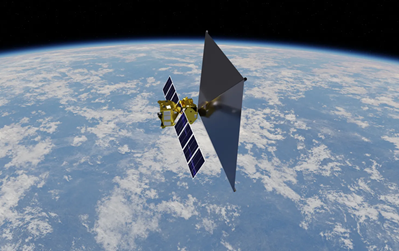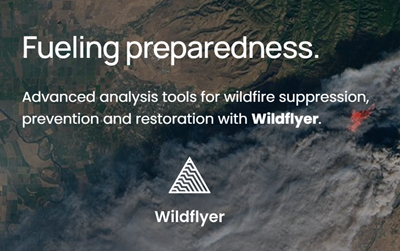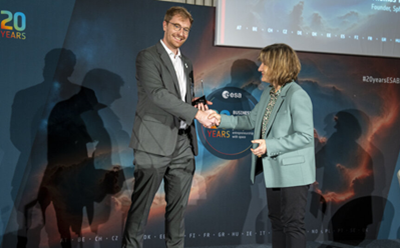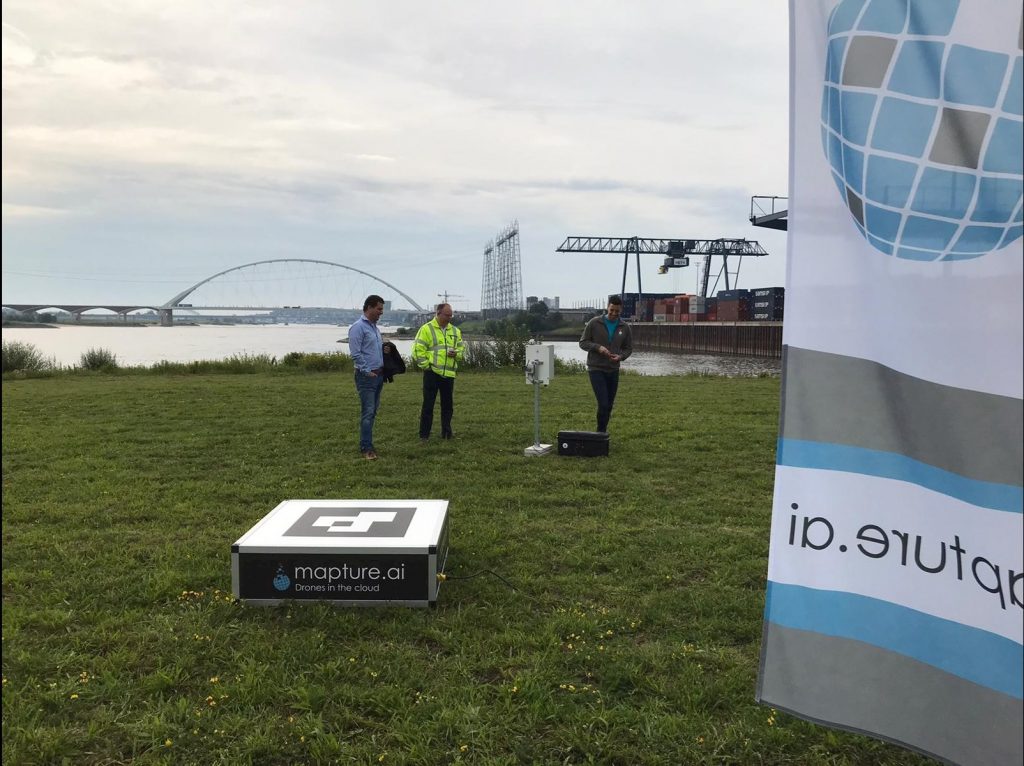
Recently Mapture.ai, the space related startup that creates autonomous drone systems, graduated from the ESA BIC Noordwijk programme.
From the start on, this business was built without any investments or loans. Landing high profile pilot projects and sitting in the front row in a highly regulated industry, Mapture can be considered as one of the drone darlings in the Netherlands. What’s their secret?
We talked to founders Niels Klink and Bart Slinger about their entrepreneurial journey and their constant search for better added value.
What makes Mapture special?
Niels: The fact that we got an exemption from current regulations – to fly BVLOS 24/7 and to fly over sparsely populated areas, is truly an important asset for us. It unlocks new business models for us and our clients. For instance, it’s now possible to run long term projects instead of just one offs.
Bart: So when someone comes up with a project, we are flexible enough to think with them and come up with an innovative solution.
Niels: What also makes Mapture special, is that we are bootstrapped from the start. This means we can have a certain level of autonomy in running our business. When you have an investor on board, it sometimes means you might be pushed in a direction you don’t want to go. As long as we don’t have to, we won’t get an investment. It will not be a goal in itself.
Bart: Our clients are looking for added value when using an autonomous drone system. That means they are also willing to pay for a pilot project upfront. So they make the investment in the project, so we don’t have to.
Space link
Mapture is using GNSS (Global Navigation Satellite System) technology for the accurate positioning of their drones.
What does it mean to have added value in your business?
Niels: That’s a relevant question, because clients are always challenging us (in a good way). They like what we do, so they ask: ‘What more can it do?’ So it’s up to us to demonstrate we are not only capable of doing broad use cases, but also very specific use cases. For instance: using our drones for the inspection of pipelines in oil terminals is way more specific than using it for automated surveillance.
Bart: To say it boldly: Added value also means to have a customer purchase a second or third system from us. That way we can really see our drones offer added value. The book ‘The Mom Test’ says ‘If you have a paying customer, you have shown value’. But we already know people want that one drone box. We are always looking for the use case where multiple boxes are necessary.
Niels: And we think an important reason why people are interested in Mapture, is the ease of use of the system. We always get compliments about our user interface. It looks nice, it works smoothly. ‘This is how it should be’, we hear more than once. So for us, developing top-notch software behind our system is also key.
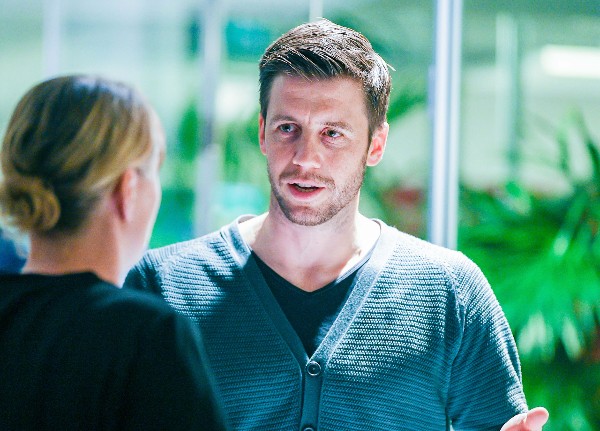
What’s the biggest challenge in the drone market right now?
Niels: Regulation, and that will be the case for a while.
Bart: It’s also a combination of regulation for drones and regulation of other air traffic. With current regulations and exemptions we can now fly BVLOS and over certain urban areas. But we can’t fly higher for instance. That’s because other air traffic cannot make themselves known to drones, and vice versa. Maybe the technology isn’t there yet, or maybe it is, but it’s not adequate enough. We don’t know this yet. We want to be able to anticipate other air traffic.
As you are quite lean in spending, what did you use the ESA BIC incentive money for?
Bart: Mainly it went to material costs. It really made a difference in our development.
Niels: We were able to spend more money on proper quality products for development. And therefore create a better quality product in the end. It also saved us a lot of time because we could buy a proper product instead of a cheaper, not properly working piece. Which would then cost us extra time to repair or figure out what is wrong. When time is one of your biggest constraints as a startup, it really helps.
Bart: Drones are becoming better and better, and thus more expensive as well. We started with a simple Parrot drone worth 300 euro. Now we use drones for several thousands of euros.
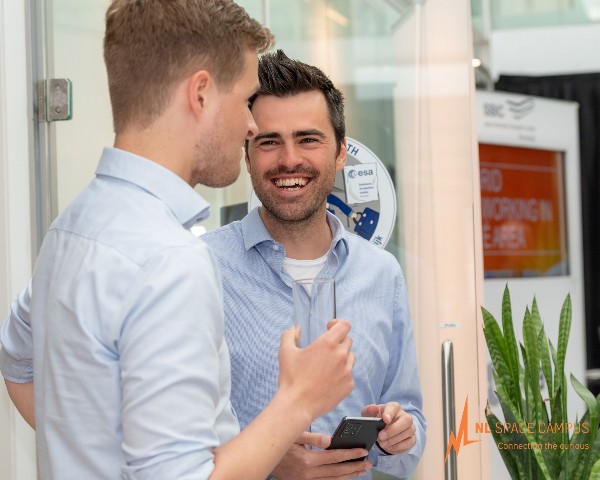
During your time in the ESA BIC programme, what stuck with you?
Bart: The community here is really nice, you can always talk and discuss business with like-minded people.
Niels: Everyone just helps each other out – whether it’s for a subsidy application or sharing contacts.
Part of the family
Mapture.ai after the programme stayed in the SBIC building, with an office, access to our fab lab and an outside test facility.
What would be your advice to starting entrepreneurs?
Niels: Read ‘The Mom Test’, an absolute must. And pitch/talk about your idea as much as possible.
Bart: For people wanting to enter the ESA BIC programme, I would say: make sure you can pay yourself by having either an additional income or make sure your pilot projects are paid. Never think you need to do a project for free, just because it’s a pilot.
